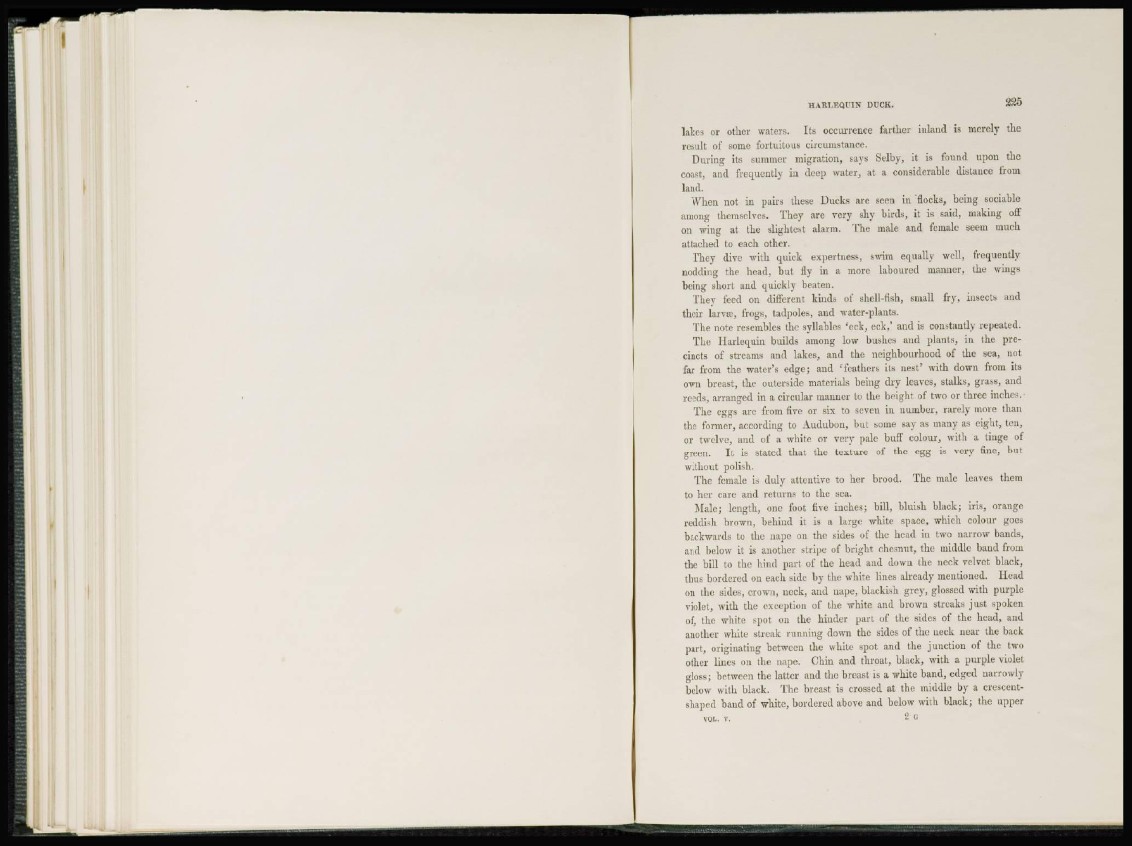
lakes or other waters. Its occurrence farther inland is merely the
result of some fortuitous circumstance.
During its summer migration, says Selby, it is found upon the
coast, and frequently in deep water, at a considerable distance from
land.
AVhen not in pairs these Ducks are seen in flocks, being sociable
among themselves. They are very shy birds, it is said, making off
on wing at the slightest alarm. Che male and female seem much
attached to each other.
They dive with quick expertness, swim equally well, frequently
nodding the head, but fly in a more laboured manner, the wings
being short and cpiickly beaten.
'I'hey teed on different kinds of shell-fish, small fry, insects and
their larva1 , frogs, tadpoles, and water-plants.
The note resembles the syllables 'eck, eck,* and is constantly repeated.
The Harlequin builds among low bushes and plants, in the precincts
of streams and lakes, and the neighbourhood of the sea, not
far from the water's edge; and ffeathers its nest' with down from its
own breast, the outerside materials being dry leaves, stalks, grass, and
reeds, arranged in a circular manner to the height of two or three inches.
The eggs are from five or six to seven in number, rarely more than
the former, according to Audubon, but some say as many as eight, ten,
or twelve, and of a white or very pale buff colour, with a tinge of
green. It is stated that the texture of the egg is very fine, bu t
without polish.
The female is duly attentive to her brood. The male leaves them
to her care and returns to the sea.
Male; length, one foot five inches; bill, bluish black; iris, orange
reddish brown, behind it is a large white space, which colour goes
backwards to the nape on the sides of the head iu two narrow bands,
and below it is another stripe of bright chesnut, the middle baud from
the bill to the hind part of the head and down the neck velvet black,
thus bordered on each side by the white lines already mentioned. Head
on the sides, crown, neck, and nape, blackish grey, glossed with purple
violet, with the exception of the white and brown streaks just spoken
of, the white spot on the hinder part of the sides of the head, and
another white streak running down the sides of the neck near the back
part, originating between the white spot and the junction of the two
other lines on the nape. Chin and throat, black, with a purple violet
gloss; between the latter and the breast is a white band, edged narrowly
below with black. The breast is crossed at the middle by a crescentshaped
band of white, burdered above and below with black; the upper
VOL. v. 2 G